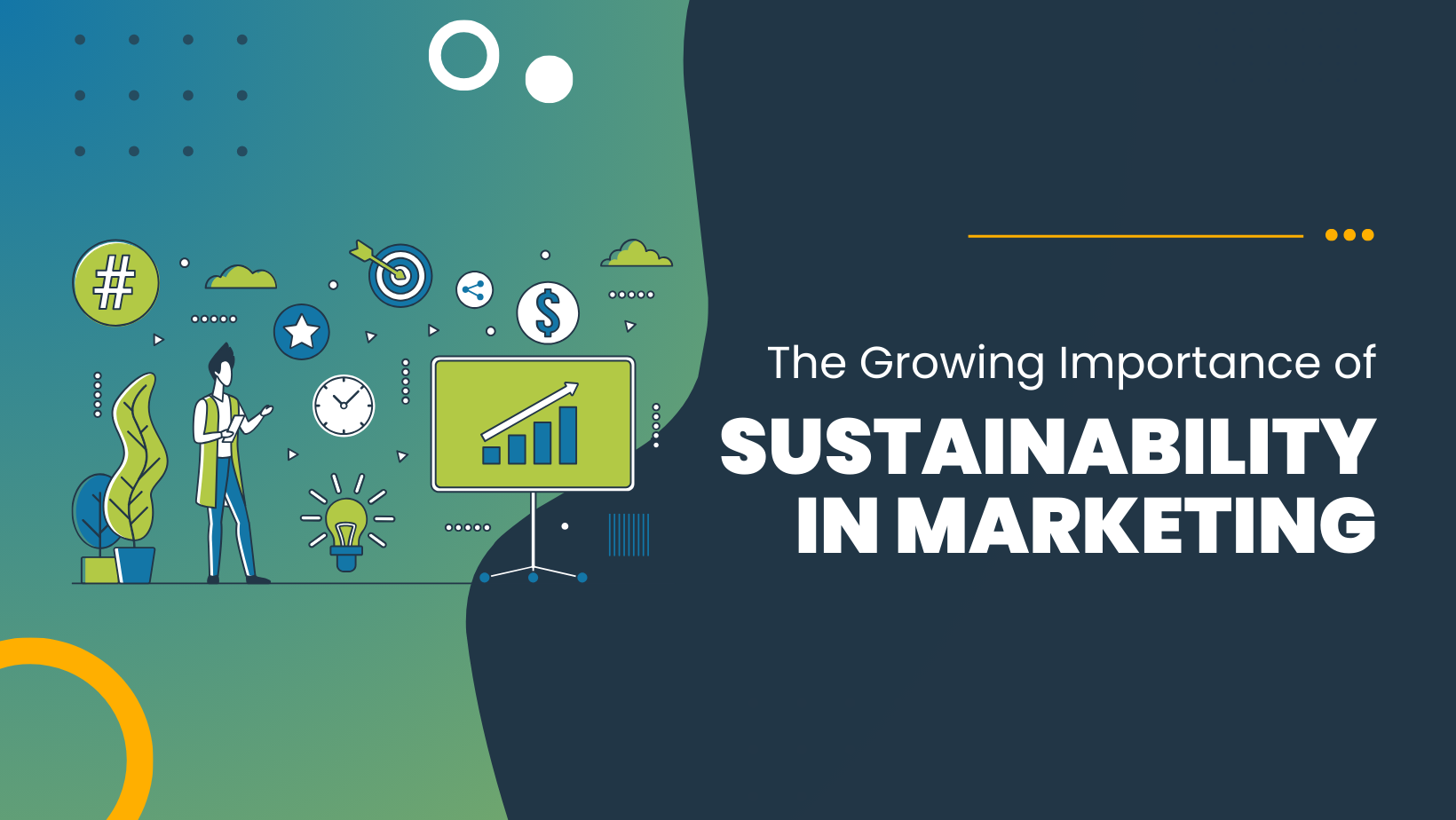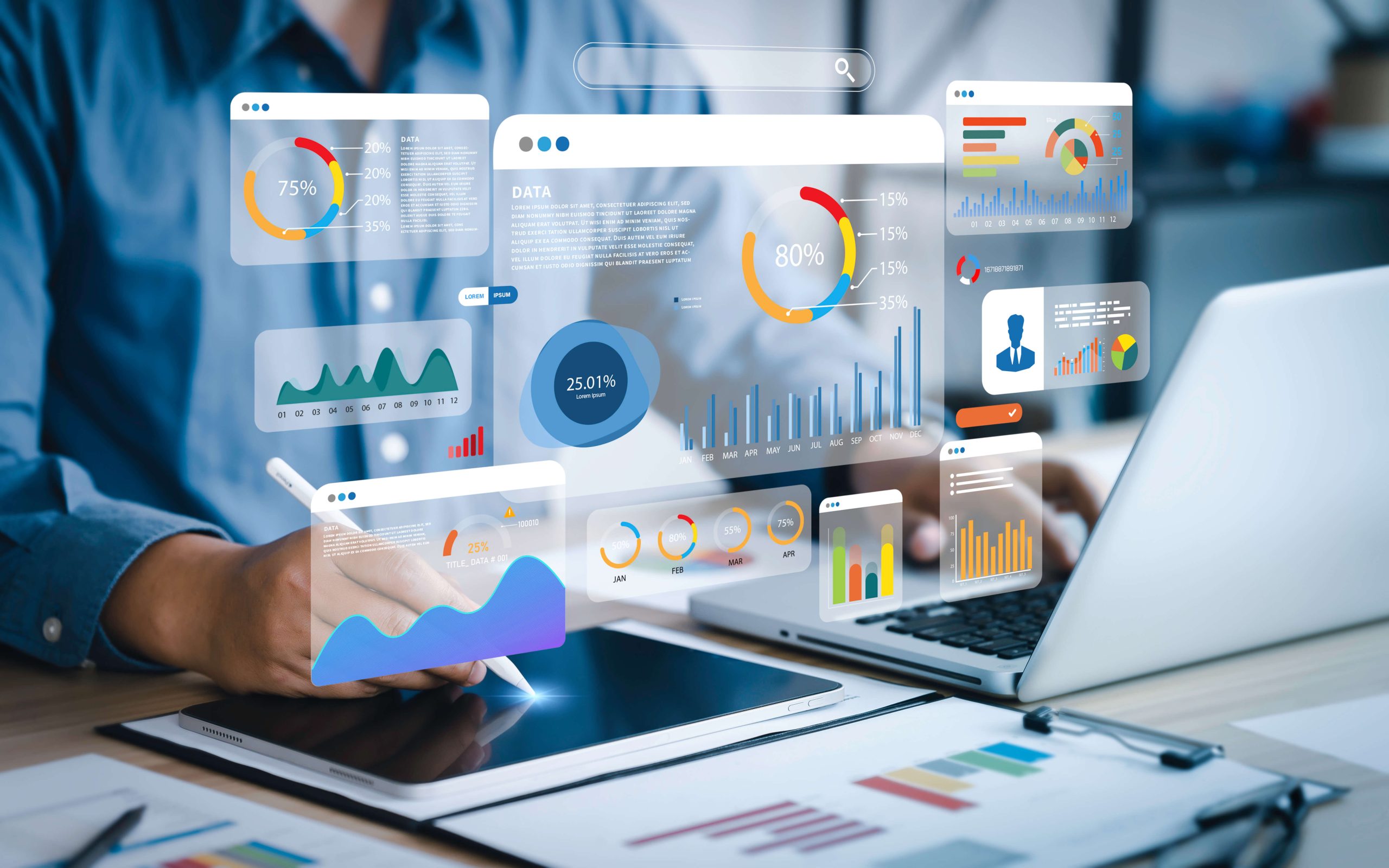
Table of Contents
Introduction
The Evolution of Business Marketing – In today’s rapidly changing business landscape, marketing has evolved beyond traditional advertising and sales techniques. The integration of digital platforms, artificial intelligence (AI), big data, and social media has transformed the way companies reach their audience. This article delves into the latest business marketing trends, explores their relevance to society, and highlights the innovations shaping the future.
The Shift Towards Digital-First Marketing

The Shift Towards Digital-First Marketing: A New Era for Brands
In today’s fast-paced digital landscape, businesses are increasingly shifting towards digital-first marketing—a strategy where digital platforms take precedence over traditional marketing channels. This evolution is driven by rapid technological advancements, changing consumer behaviors, and the need for more personalized, data-driven engagement.
This article explores the key aspects of digital-first marketing, why it matters, how brands can successfully adopt it, and what the future holds for this growing trend.
The Rise of Digital-First Marketing
1. The Digital Transformation of Consumer Behavior
Consumers are more connected than ever, thanks to smartphones, social media, and AI-driven search engines. Here are some key shifts:
Mobile Dominance: Over 60% of global web traffic now comes from mobile devices. Brands must optimize for a mobile-first experience.
Social Media Influence: Platforms like TikTok, Instagram, and LinkedIn are shaping buying decisions, making social commerce a necessity.
On-Demand Expectations: Consumers demand instant access to products, services, and information. Websites, apps, and chatbots play a crucial role in delivering seamless experiences.
2. The Decline of Traditional Marketing Channels
While TV, radio, and print advertising still have value, digital platforms offer greater flexibility and measurable results. Brands are reducing traditional ad spends and reallocating budgets toward:
Search Engine Marketing (SEM) & SEO
Social Media Advertising
Influencer & Content Marketing
AI-Powered Personalization
3. The Role of Data and AI in Digital-First Strategies
AI and machine learning enable hyper-personalization, helping brands target the right audience with tailored content. Tools like:
Predictive analytics forecast consumer behavior.
Chatbots & AI assistants enhance customer engagement.
Automated content generation speeds up marketing efforts.
By leveraging data insights, businesses can optimize campaigns in real-time, improving ROI and customer satisfaction.
Key Strategies for Digital-First Marketing Success
1. Prioritizing Customer-Centric Experiences
Consumers want brands to engage them authentically. Strategies to enhance customer experience include:
Omnichannel Marketing: Integrating social media, email, websites, and mobile apps to create a seamless user journey.
Interactive & Personalized Content: Engaging consumers with AI-driven recommendations, quizzes, and polls.
Community Building: Leveraging platforms like Discord, Reddit, and private Facebook groups for deeper connections.
2. Leveraging the Power of Social Media
Social media is more than a brand awareness tool—it’s a conversion powerhouse. Brands should:
Invest in Short-Form Video Content: TikTok, Instagram Reels, and YouTube Shorts drive engagement.
Use Influencer Partnerships: Micro-influencers (10K–100K followers) have higher trust and engagement rates.
Explore Social Commerce: Features like Instagram Shopping and TikTok’s marketplace simplify the buying process.
3. Implementing AI-Driven Marketing Automation
Automation helps brands scale efficiently by:
Automating Email & Chatbot Interactions for real-time engagement.
Using AI to Optimize Paid Ads for better targeting and cost efficiency.
Deploying Predictive Analytics to refine marketing strategies.
4. Content Marketing as a Growth Engine
A digital-first approach requires high-quality, SEO-driven content. Key tactics include:
Long-Form Blog Content (guides, case studies, reports).
Video Marketing (educational YouTube content, webinars).
User-Generated Content (UGC) to build authenticity and trust.
Content that provides value, entertainment, and education attracts and retains audiences better than direct advertising.
5. Adapting to Privacy Changes and Ethical Marketing
With growing concerns over data privacy, brands must shift towards transparent and ethical marketing:
First-Party Data Strategy: Relying on customer-submitted data instead of third-party tracking.
Consent-Based Personalization: Respecting user choices on data collection.
Ethical AI Use: Ensuring AI-driven marketing remains unbiased and fair.
The Future of Digital-First Marketing
Metaverse & Virtual Reality (VR) Marketing
Brands will explore immersive advertising in digital spaces like Meta’s Horizon Worlds, offering interactive shopping experiences.
Voice Search & Conversational AI
With the rise of voice assistants (Alexa, Google Assistant), optimizing for voice SEO will become crucial.
Blockchain in Digital Marketing
Decentralized platforms will enhance consumer data security and transparency, reshaping digital advertising.
Sustainable & Purpose-Driven Marketing
Consumers prefer brands with social responsibility—sustainability-focused messaging will dominate campaigns.
The shift towards digital-first marketing is not just a trend but a necessity for brands looking to thrive in the modern landscape. By embracing AI, automation, content-driven engagement, and ethical marketing, businesses can build stronger, long-lasting connections with their audiences.
Companies that adapt to these changes will lead the future—while those clinging to traditional methods risk falling behind.
Personalization and AI-Powered Marketing
In today’s digital landscape, businesses are shifting from traditional marketing strategies to personalized, AI-powered approaches. Consumers expect brands to understand their needs, provide relevant recommendations, and create seamless experiences across multiple channels. AI-driven personalization is transforming marketing by enabling companies to analyze vast amounts of data and deliver tailored content in real time.
This article explores the latest trends in AI-powered marketing personalization, its impact on businesses and consumers, and the future of this rapidly evolving field.
The Evolution of Personalization in Marketing
Traditional Personalization
Before AI, personalization in marketing was primarily limited to simple tactics such as addressing customers by name in emails or segmenting audiences based on demographics. While effective, these methods lacked the capability to analyze real-time data and predict consumer behavior.
AI-Powered Personalization
With advancements in artificial intelligence, marketers can now leverage machine learning algorithms, natural language processing (NLP), and predictive analytics to deliver hyper-personalized experiences. AI enables businesses to:
Understand customer behavior and preferences through data analysis
Provide personalized recommendations based on past interactions
Automate and optimize marketing campaigns in real time
The Role of AI in Personalization
1. Data Collection and Analysis
AI-powered marketing relies on big data. AI systems gather and analyze data from various sources, including:
Website interactions
Social media activity
Purchase history
Email engagement
Customer feedback
By analyzing these data points, AI identifies patterns and predicts future behaviors, allowing marketers to deliver relevant content and offers.
2. Dynamic Content Generation
AI enables brands to create personalized content at scale. Instead of using a one-size-fits-all approach, AI tools can:
Generate personalized email subject lines and body text
Customize website content based on user behavior
Deliver targeted ads that match customer preferences
3. Chatbots and Conversational AI
Chatbots powered by AI enhance customer experiences by providing instant, personalized support. Features include:
Answering customer queries in real time
Offering product recommendations based on past interactions
Assisting with transactions and troubleshooting issues
4. Predictive Analytics for Customer Behavior
AI-driven predictive analytics helps marketers anticipate customer needs. By analyzing past behavior, AI can:
Predict which products a customer is likely to purchase next
Determine the best time to send marketing messages
Identify potential churn risks and offer retention incentives
The Impact of AI-Powered Personalization
Benefits for Businesses
Increased Customer Engagement: Personalized content leads to higher interaction rates and brand loyalty.
Higher Conversion Rates: AI-driven recommendations boost sales by offering relevant products and services.
Cost Efficiency: Automation reduces the need for manual marketing efforts, saving time and resources.
Improved Decision-Making: AI provides actionable insights that help businesses refine their strategies.
Benefits for Consumers
Better Shopping Experiences: Customers receive tailored recommendations, making it easier to find relevant products.
More Relevant Content: AI ensures consumers see ads and messages that align with their interests.
Faster Customer Support: Chatbots and AI assistants provide instant responses, enhancing user satisfaction.
Challenges and Ethical Considerations
Data Privacy Concerns
With AI relying heavily on consumer data, privacy remains a major concern. Businesses must ensure compliance with regulations like GDPR and CCPA by:
Obtaining explicit user consent before collecting data
Implementing robust data security measures
Providing transparency on data usage
Avoiding Bias in AI Algorithms
AI models can inherit biases from the data they are trained on. Companies must:
Regularly audit AI algorithms for fairness
Use diverse datasets to minimize bias
Employ ethical AI frameworks
Balancing Automation and Human Touch
While AI enhances efficiency, over-reliance on automation can make interactions feel impersonal. Businesses should:
Maintain human oversight in customer interactions
Blend AI-driven personalization with human engagement
Ensure AI complements rather than replaces human creativity
Future Trends in AI-Powered Marketing
1. Hyper-Personalization
Future AI advancements will enable even deeper personalization, tailoring experiences down to individual preferences in real time.
2. Voice Search and AI Assistants
As voice search grows, AI-powered marketing will adapt to optimize content for voice-driven interactions.
3. Augmented Reality (AR) and AI
AI-powered AR will allow consumers to visualize products before purchasing, enhancing online shopping experiences.
4. AI-Generated Creative Content
AI will assist in creating personalized images, videos, and text, making marketing content more dynamic and engaging.
AI-powered personalization is reshaping the marketing landscape, offering businesses unprecedented opportunities to engage customers effectively. While challenges exist, ethical AI practices and data privacy considerations will ensure sustainable growth in this field. As technology evolves, businesses that embrace AI-driven personalization will remain ahead in the competitive digital marketplace.
By leveraging AI, brands can create deeper connections with their customers, driving engagement, loyalty, and long-term success.
The Rise of Social Commerce
The Rise of Social Commerce: How Social Media is Transforming Online Shopping
The rapid evolution of social media has given birth to a new era of e-commerce: social commerce. Unlike traditional online shopping, where consumers visit dedicated websites or marketplaces, social commerce allows users to discover, engage with, and purchase products directly within their favorite social media platforms.
With platforms like Instagram, Facebook, TikTok, and Pinterest integrating shopping experiences seamlessly, social commerce is reshaping consumer behavior and the way businesses operate. This article explores the rise of social commerce, its impact on the digital economy, and what the future holds for this dynamic industry.
What is Social Commerce?
Social commerce refers to the buying and selling of products or services directly within social media platforms. It eliminates the need for external e-commerce websites, enabling a more integrated and seamless shopping experience. Instead of clicking a link that redirects them to another website, users can complete transactions within the same app they use for social interactions.
Key components of social commerce include:
In-app shopping (e.g., Instagram Shop, Facebook Marketplace)
Shoppable posts and stories
Live shopping events
Influencer-driven sales
Community-driven product recommendations
The Growth of Social Commerce
1. Increasing Consumer Engagement on Social Media
Social media platforms are no longer just spaces for social interactions; they have become major hubs for brand discovery and engagement. With over 4.9 billion social media users worldwide, platforms like Instagram, TikTok, and Facebook have become essential for brands looking to reach and engage their target audiences.
2. The Role of Influencers in Social Commerce
Influencer marketing has played a significant role in the growth of social commerce. Consumers are more likely to trust product recommendations from people they follow rather than traditional advertisements. Influencers and content creators leverage their credibility to drive direct sales by showcasing products in an organic and relatable manner.
3. The Rise of Video-Based Shopping
Short-form videos and live-stream shopping events are changing how people shop online. Platforms like TikTok and Instagram Reels allow brands to showcase products in an engaging way. Live shopping, particularly in China, has become a multi-billion-dollar industry, with influencers and brands hosting live sales where customers can purchase items in real time.
How Businesses Are Leveraging Social Commerce
1. Shoppable Posts and Stories
Brands can tag products in posts, allowing users to click and purchase instantly. Instagram, Facebook, and Pinterest all offer this feature, making product discovery more interactive and engaging.
2. AI-Powered Personalization
AI and machine learning algorithms analyze user behavior to provide personalized recommendations, ensuring that consumers see products that align with their preferences.
3. Live Shopping Events
Brands are hosting live shopping events on platforms like TikTok, YouTube, and Facebook, where hosts showcase products and interact with viewers in real-time, answering questions and providing exclusive deals.
4. Seamless Checkout Integration
With features like Instagram Checkout and Facebook Pay, customers can complete transactions without leaving the app, reducing friction and increasing conversion rates.
The Impact of Social Commerce on Consumers
1. Convenience and Accessibility
Social commerce makes shopping easier and more accessible. Users can discover products organically while scrolling through their feeds, eliminating the need to visit multiple websites.
2. Authentic Customer Reviews and Recommendations
Unlike traditional e-commerce sites that rely on text-based reviews, social commerce allows users to see real-time feedback, video testimonials, and unfiltered product experiences shared by other customers.
3. Enhanced Engagement and Brand Loyalty
Brands that leverage social commerce effectively foster stronger relationships with their customers. Engaging content, live interactions, and direct messaging options create a personalized shopping experience that traditional e-commerce sites often lack.
The Future of Social Commerce
1. Integration of Augmented Reality (AR)
Platforms are investing in AR shopping experiences, allowing users to try on products virtually before making a purchase. AR filters for makeup, fashion, and home decor are already transforming the industry.
2. Blockchain and Cryptocurrency Payments
With the rise of digital currencies and decentralized finance (DeFi), social commerce may soon integrate crypto transactions, offering new payment options for consumers worldwide.
3. Expansion of AI-Driven Shopping Assistants
Chatbots and AI assistants will continue to enhance the shopping experience by providing real-time product recommendations, answering queries, and guiding users through the purchase process.
Social commerce is redefining the way people shop online. With its ability to blend entertainment, engagement, and commerce seamlessly, it presents a huge opportunity for businesses to connect with consumers in a more meaningful way. As technology continues to evolve, we can expect even more innovative, personalized, and immersive shopping experiences in the years to come.
Brands that embrace social commerce now will be well-positioned for future success in the digital marketplace. The rise of social commerce is not just a trend—it’s a fundamental shift in the way e-commerce operates.
The Importance of Sustainability in Marketing

Modern consumers are increasingly conscious of sustainability and ethical business practices. Companies that incorporate sustainability into their marketing strategies gain a competitive edge. Key trends include:
- Eco-Friendly Branding: Businesses highlight their commitment to sustainability through packaging, supply chain practices, and corporate social responsibility initiatives.
- Transparency and Authenticity: Consumers value brands that are open about their production processes and ethical standards.
- Green Digital Marketing: Reducing digital carbon footprints by optimizing website performance and using energy-efficient servers.
The Power of Omnichannel Marketing
Omnichannel marketing ensures that customers receive a seamless experience across multiple touchpoints. Businesses leverage various platforms, including:
- Email Marketing: Personalized email campaigns with dynamic content improve engagement and conversions.
- Mobile Marketing: SMS marketing and push notifications provide instant updates and promotions.
- Brick-and-Mortar Integration: Physical stores use digital solutions such as QR codes and in-store apps to enhance the shopping experience.
The Future of Business Marketing
As technology continues to evolve, marketing strategies will become more sophisticated. Future trends to watch include:
- Metaverse and Virtual Reality (VR) Marketing: Brands will create immersive experiences in virtual spaces.
- Voice Search Optimization: As voice assistants like Alexa and Google Assistant grow in popularity, businesses will need to optimize for voice search.
- Blockchain in Marketing: Decentralized advertising and transparent data management will reshape digital marketing.
Conclusion
Business marketing is undergoing a profound transformation, driven by digital innovation, AI, social commerce, and sustainability. Companies that adapt to these changes and embrace emerging trends will remain competitive in the evolving market landscape. By leveraging personalization, omnichannel strategies, and ethical marketing, businesses can build stronger relationships with consumers and drive long-term success.
Read Also: Qualified Settlement Funds (QSF) and California Form 587









:max_bytes(150000):strip_icc()/Term-Definitions_Digital-Marketing-5ae6ea1aee934b02a94a1a4d9401443d.jpg)



